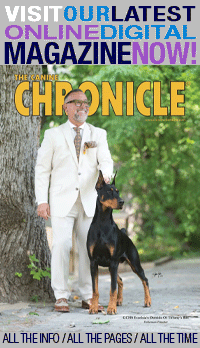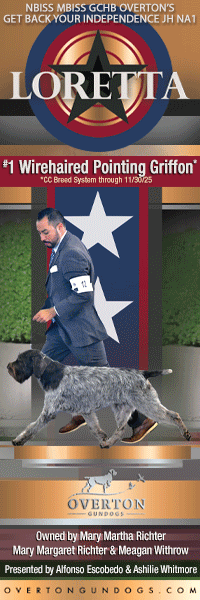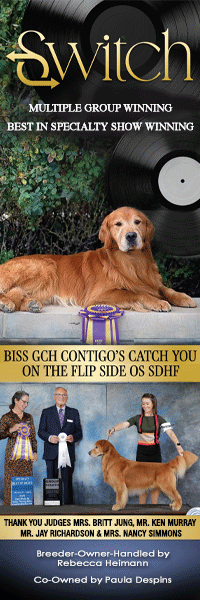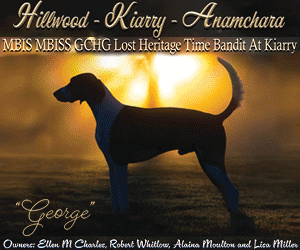Head Cases
By Lisa Dube Forman
Depending on the breed, one of the most interesting features is their headpiece. Headpieces glorify the breed by way of expression and shape. Expression is achieved by appearance, rather the dog’s look, set, shape and color of their eyes, set-on of the ear, the planes of the backskull and muzzle or foreface.
So many details go into sculpting a marvelous head. Many breeds are considered ‘head breeds’ insofar as the head is synonymous with the breed’s essence. The headpiece instantly identifies the breed, and fanciers place enormous emphasis on this aspect. Frankly, a glorious headpiece can sway many a judge’s opinion viewing it as the pièce de résistance.
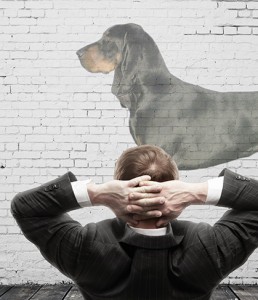 In truth, the skull is the composition of ALL the bony components of a dog’s head, including the upper and lower jaws. In lay terms, there are three scientific classifications for all breeds skulls derived from base width and skull length. Their names are not easily pronounced nor important for discussion save for one, but their overall shapes are fundamental. The first is a narrow skull base with great length, i.e., Borzoi. Next, the medium base width and proportions of length, i.e., the majority of breeds. The third is most commonly known because of its exaggerations — the brachycephalic skull — which has a broad base and short skull length, i.e., Bulldog.
In truth, the skull is the composition of ALL the bony components of a dog’s head, including the upper and lower jaws. In lay terms, there are three scientific classifications for all breeds skulls derived from base width and skull length. Their names are not easily pronounced nor important for discussion save for one, but their overall shapes are fundamental. The first is a narrow skull base with great length, i.e., Borzoi. Next, the medium base width and proportions of length, i.e., the majority of breeds. The third is most commonly known because of its exaggerations — the brachycephalic skull — which has a broad base and short skull length, i.e., Bulldog.
From here, all due to selective breeding, there are a variety of skull sizes and shapes which set the breeds apart from one another. First, breed blueprints detail the overall headpiece and break down its components with specifics. Almost all detail the shape of the skull with the most commonly cited being apple, arched, broad, coarse, cone or conical, domed, flat, oval, rounded, and wedge-shaped. Obvious examples of some of these types are the American Cocker Spaniel with a domed top skull and the cone-shaped skull ideally represented by the Dachshund. The Cavalier King Charles Spaniel demonstrates a rounded top skull and the Bull Terrier is an example of an oval or egg-shaped skull. Two last good examples are the Collie with a wedge-shaped skull and the Wire Fox Terrier whose brick-shaped skull is long and rectangular; its width of muzzle (foreface) and backskull are nearly the same. Other virtuous and faulty head descriptions include blocky, Fox-like, tapering or squared-off.
The other elements of an ideal head are often the first things noticed. Since I have already discussed eyes and ears with their features — see “The Eyes Have It” and “Hear No Evil” published on CanineChronicle.com — I will not go into detail about them. I will add though that a poor eye can ruin an otherwise correct headpiece. The eyes are windows into the soul and convey disposition, warmth or otherwise. Eyes and ears are intrinsic for both strong points and beauty, or flaws and ugliness. I recommend both articles for reference.
An ugly or atypical headpiece on an otherwise correct frame, in my opinion, is regrettable. “I just can’t get past that head,” is a phrase I often use in my breed, especially if I had to look at it every day. I was schooled by old-timers, those who cherished shape and finesse. I qualify this statement by adding my origins are a breed designed in curves; the greyhound-like Irish Wolfhound whose expression is poignant with a faraway gaze.
Almost all heads are an identifier of a breed. So much so that if the head were masked or removed from the photo, a dog hobbyist may have a difficult time distinguishing the breed. Conversely, with good reason many learned fanciers say that the working, hunting breeds do not ‘run on their heads.’ This argument is not entirely valid because the skull composes all the head bones, including the jaws. Backskull measurements can determine the width of jaws and formation of dentition. Soft mouths are important in the gun dog breeds and narrow mandibles or lower jaws are detrimental for hunters, not to mention that it produces wry and parrot mouths. Some believe faulting a dog’s headpiece, effectively removing him from awards, is likened to ‘throwing the baby out with the bathwater.’ However, in some of our ‘head breeds’ this is not true, as the headpiece is the quintessence of the breed.
Short URL: http://caninechronicle.com/?p=46838
Comments are closed
